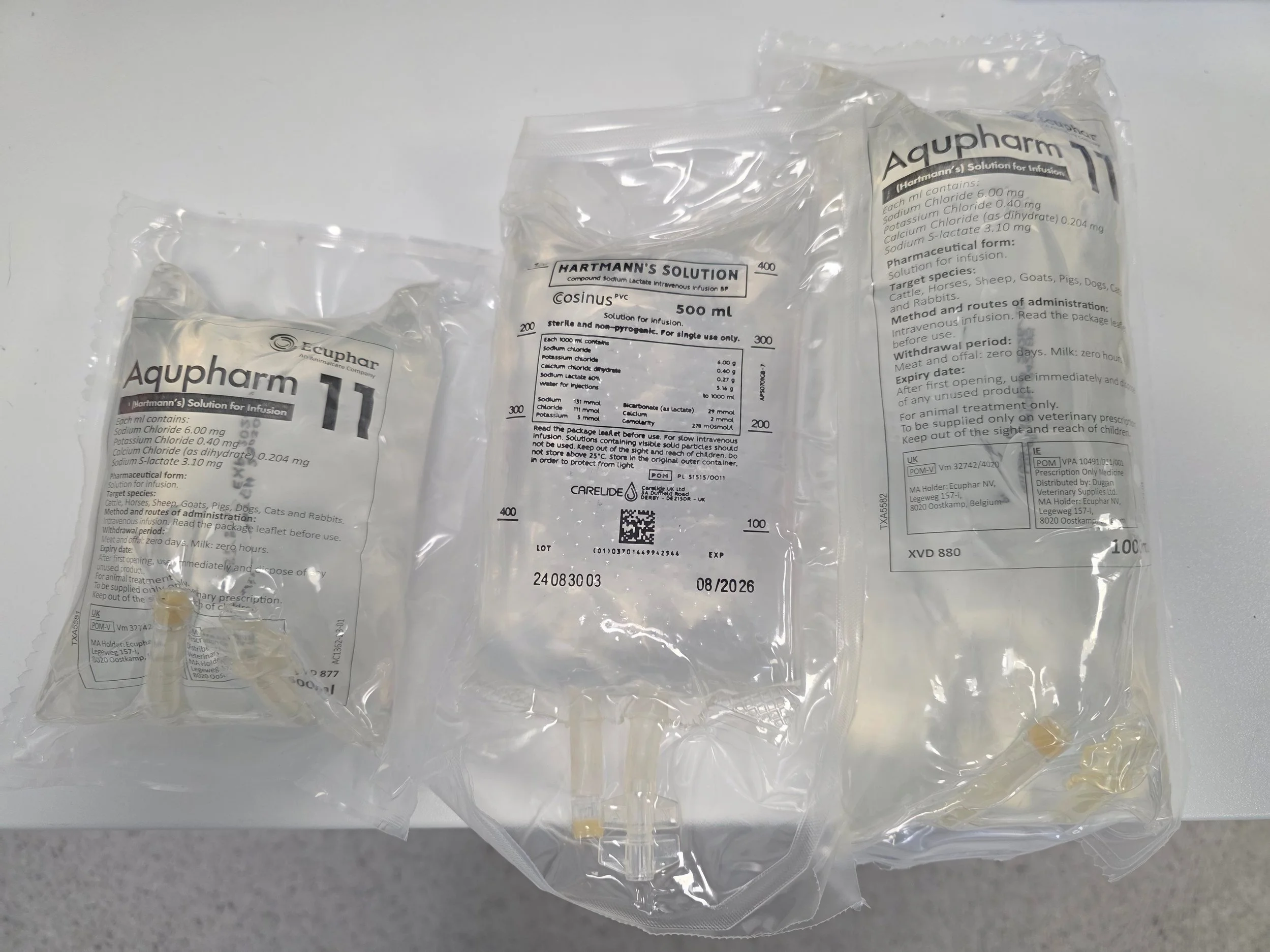Important to know: Fluid Therapy in Small Animal Veterinary Practice
Fluid therapy for Anaesthesia
Introduction
Fluid therapy is a cornerstone of both treatment and supportive care in both human and veterinary medicine, particularly for small animals such as dogs and cats. Whilst it is often evident why we need to fluids in certain conditions, such as kidney failure, diarrhoea or vomiting, its use during operations and procedures is not always fully understood.
In this article we try to explain why:
Key points
- Intravenous fluid therapy is used during anaesthesia to deliver greater control over blood pressure
- Many anaesthetic medications reduce blood pressure to a greater or lesser degree
- Low blood pressure can impact blood delivery to organs, and thus oxygen getting to those organs
- There are different sorts of fluids that can be used (but this gets very technical as to why and when different sorts would be chosen so it isn’t covered here)
- A balanced electrolyte solution (Hartmann’s) is the most used fluid type
- All patients benefit from IV fluid no matter their age or what procedure is being carried out
Background
Blood is essential for life and without it we cannot live! Blood is, in large part, water. To be more specific, 40-50% are white/blood cells, whilst the remaining 60% is a balanced protein and electrolyte solution. The red cells carry the oxygen, whilst the solution is responsible for transporting hormones, minerals etc. Suffice it to say, both are important!
Blood pressure (BP) is an important measurement to give us an indication of how well organs are being perfused at the time of measurement. As with all measures, there is more nuance to blood pressure, but as a general measure that is where we start.
The impact of anaesthesia
Anaesthetics, be that sedation, or a general anaesthetic, impact the blood pressure. The medications used generally reduce the blood pressure in a variety of ways. Some can slow the heart rate, whilst others dilate blood vessels. Both a slower heart rate, and dilated blood vessels, reduce the BP and thus impact the organ perfusion.
Is this a problem?
It can be. If BP drops too low, this can starve the brain, and other tissues of oxygen. What this can look like in a clinical setting is a much slower recovery. The recovery tends to be longer and slower to wake as the medication works their way out of the system. This could then lead to longer hospital stays, transfers to overnight care providers and higher stress for all involved!
Other factors that play into the BP challenge include the age of patients, any diseases or illnesses, the length of the anaesthetic and how they recover.
Can we do anything about it?
The good news is Yes! Much of our attention during an anaesthetic is focused on BP and pain management. Measuring and monitoring the changes in BP during an anaesthetic is critical to good care. Adjusting medication volumes, setting doses to reduce the impact on BP, and using a variety of different medications help maintain the balance.
Additionally, including IV fluids is an important tool to be able to refine blood pressure levels.
How does it work?
In a healthy patient, having a direct line into the blood stream allows us to replace the potential fluid loss with like for like fluid. Rates of adding the fluid can be adjusted based on readings so we refine the rate and volume of fluids being administered. The most common choice of fluid is a product called “Hartmann’s” solution.
Do we have to use IV fluids?
IV fluids help improve safety and recovery of our patients, but they are not always essential. In young, fit, healthy pets, there is a lower risk of unexpected Blood pressure problems. In these cases, the body can often adapt under the pressures of anaesthesia. It is because of this body adaptability that for young patients undergoing neutering, we do not offer the support as standard in certain operations or interventions.
Can I request IV fluids?
Always, and we do encourage and recommend it. Given we withhold food from our patients prior to an operation, and in many instances, despite every effort made, they do not drink whilst in hospital, IV fluids ensure we do not compromise general health, and they will have benefits post operation as well as during.
In many procedures, we have already included the IV fluids in the plan and estimate but where additional reassurance for recovery and health is desired, having fluids is always recommended.
Conclusion
Fluid therapy is an essential tool in any medical environment. For anaesthesia, the use of IV fluids results in a better recovery, a more stable patient and greater control of their blood pressure. We encourage all patients to have fluids for ops, no matter how healthy they are or what age!


